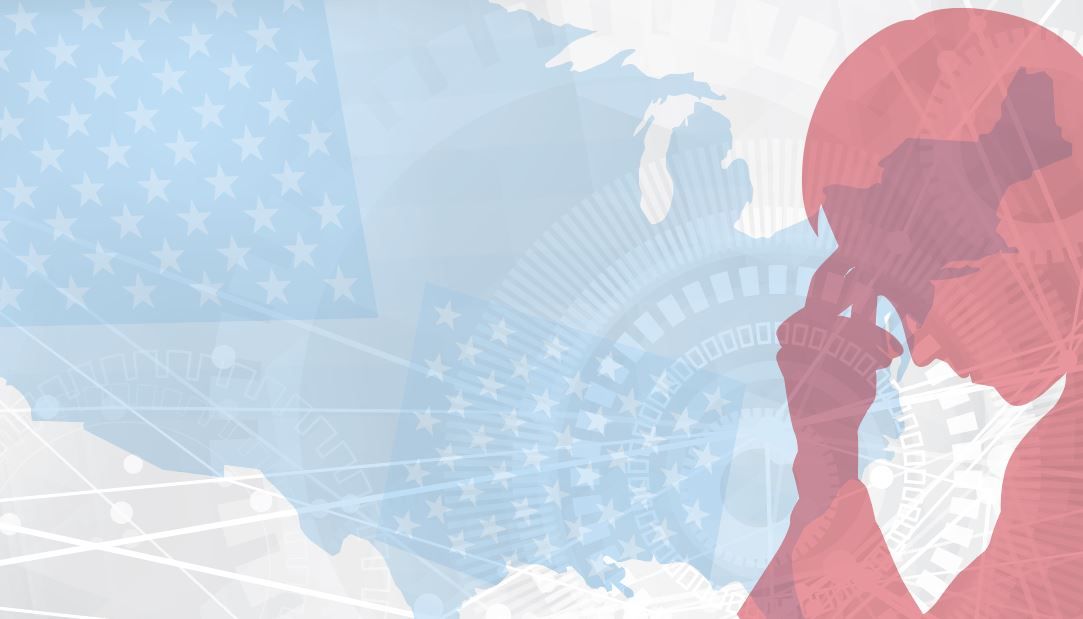Publication
Article
Psychiatric Times
Psychiatry Is Alive and-Well, It’s Complicated
Author(s):
There is a myth circulating in the blogosphere-usually among the most extreme critics of our profession-that there exists some monolithic entity called “Psychiatry” (with a capital “P”).
COMMENTARY
Is psychiatry as we know it “dead”?1 Not on your life! But if you believe some of the doleful pronouncements in the blogosphere, you might as well be hanging crepe for our profession. Yes, we need to address some significant problems within and outside our discipline, as is true of most medical specialties. But to paraphrase Mark Twain, reports of psychiatry’s death have been greatly exaggerated.
That’s not to deny that psychiatry has faced some serious challenges and setbacks in the past few years. [[{"type":"media","view_mode":"media_crop","fid":"38661","attributes":{"alt":"","class":"media-image media-image-right","id":"media_crop_7992580058617","media_crop_h":"0","media_crop_image_style":"-1","media_crop_instance":"3864","media_crop_rotate":"0","media_crop_scale_h":"93","media_crop_scale_w":"200","media_crop_w":"0","media_crop_x":"0","media_crop_y":"0","style":"float: right;","title":" ","typeof":"foaf:Image"}}]]Nor is it to paper over the problems that beset our field, including but not limited to improving our still-evolving diagnostic system.2 But I believe psychiatry has the will and the ability not just to survive, but to thrive, amidst the current crises. And one encouraging sign is the recent uptick in senior medical students choosing to enter psychiatry3-more on this anon.
Before pursuing the underlying issues further, we need to consider a bit of punctilious punctuation. There is a myth circulating in the blogosphere-usually among the most extreme critics of our profession-that there exists some monolithic entity called “Psychiatry” (with a capital “P”). This critical narrative usually depicts “Psychiatry” as an undifferentiated conglomerate of moneyed interests and murky science, corrupted by Big Pharma and interested only in the authoritarian exercise of power. I’m not referring to responsible critics who want to reform psychiatry.4 I’m talking about polemical rhetoric aimed at marginalizing and delegitimizing more than 45,000 psychiatrists in the US-the overwhelming majority of whom are decent, compassionate healers who must cope every day with the immense suffering of patients afflicted with psychiatric illnesses.
There’s nothing wrong with writing books or blogs about prominent psychiatrists who, in fact, have been unduly influenced by Big Pharma. After all, we need to be alert to financial and ethical conflicts of interest.5 But I suspect it would be much harder to write a best-seller about the thousands of work-a-day psychiatrists who get up every morning and listen to the Iraq War veteran who suffers from posttraumatic flashbacks; the grieving mother whose drug-addicted son died of a heroin overdose; the patient with Alzheimer disease who no longer recognizes his wife; or the college student with schizophrenia who says that “the Devil’s voice” is telling him to jump out a window.
Unfortunately, books about kindness, dedication and patience are a hard sell to publishers these days. Yet these are the qualities that I have witnessed in my teachers, students, and colleagues over the past 33 years. And, yes-often it was my patients who were most inspiring and from whom I learned the deep lessons of courage. They did not consider themselves “psychiatric survivors” in the perverse sense anti-psychiatry groups like to promote; rather, my patients understood that they had survived devastating illnesses-no less real or debilitating than heart disease or cancer. And, like oncology patients, they reluctantly accepted some significant adverse effects of their medication, knowing that the benefits of treatment outweighed the risks.
There is another sense in which capital “P” Psychiatry is misleading. Our profession is incredibly diversified. You might be a geriatric psychiatrist consulting to a nursing home-or an existential psychiatrist examining mortality and meaninglessness. You might specialize in psychopharmacology or provide classical psychoanalysis. (Yes, yes-we always hear that psychiatrists have “stopped doing psychotherapy,” yet a 2008 study showed that almost 60% of psychiatrists were provid-ing psychotherapy for at least some of their patients.6) As psychiatrist Leigh Jennings7recently noted:
Psychiatrists work in many diverse settings that include residential treatment centers for teens, jails and prisons, eating disorder treatment centers, and nursing homes. Forensic psychiatrists evaluate accused persons and function as expert witnesses in court. Community psychiatrists work with teams of case managers to provide mental health care for the homeless and underprivileged. Sleep doctors treat sleep disorders and run sleep labs. Psychosomatic (aka Consult/Liaison) psychiatrists see medical/surgical inpatients. Geriatric psychiatrists evaluate and treat late-life psychiatric syndromes. And researchers work for academic or private organizations creating and disseminating knowledge.
In short, “Psychiatry” as a single-minded, corporate entity is a caricature of our profession, and a creature of those who wish to disparage or abolish it. So, for example, the claim that “Psychiatry” as an institution deliberately foisted a simplistic “chemical imbalance theory” on an unknowing public is mostly a lot of hooey,8 and those who foster this myth of victimization still don’t understand the difference between a hypothesis and a theory.* (The former might be likened to a single strand; the latter, to a tapestry). It is nearer the truth to suggest that if you ask 45,000 American psychiatrists about “chemical imbalances” as a cause of mental illness, you will get 46,000 answers!
To be sure, neurobiological models and pharmacological therapies have dominated our field in the past 2 decades-often for the good, but sometimes to the detriment of our deeper understanding of the patient.9 Nevertheless, the “biopsychosocial” model pioneered by Drs George Engel and John Romano remains the predominant approach to psychiatric illness in major psychiatric training centers, such as the University of Rochester and SUNY Upstate Medical University (my alma mater).10-12 Yes, I know: academic psychiatry is not psychiatry in the “trenches”-I spent 20 years caring for the sickest patients in an underfunded state mental health system-but at heart, psychiatrists remain holistic in their understanding of mental illness.
This case vignette shows why such a comprehensive approach to emotional problems remains the province of the well-trained psychiatrist.
CASE VIGNETTE
Ms A, a 34-year-old married mother of 2, gave birth to a healthy baby girl 1 month before psychiatric evaluation. Since then, the patient has experienced pronounced loss of appetite, a 5-lb weight loss, early morning awakening, irritability and anger, overwhelming fatigue, and absence of pleasure in her usual activities.
She has had difficulty in “bonding” with her baby, which has prompted feelings of guilt and unworthiness, and the belief that “maybe God didn’t intend me to have this baby.” She has had fleeting thoughts of harming the infant. Because of this, her husband has been reluctant to leave her alone with the children.
In addition, she reported an unusual sensitivity to heat and occasional palpitations. The evaluating psychiatrist noted that the patient had a fine, bilateral tremor of her hands and a resting heart rate of 118 beats per minute. Given the history of heat intolerance, the psychiatrist ordered thyroid function tests, which revealed a thyroid-stimulating hormone level of 0.05 μIU/mL (normal, 0.34 to 5.66); a thyroxine (T4) level of 2.40 ng/dL (normal, 0.52 to 1.21); and high antithyroid antibody titers. A diagnosis of postpartum depression complicated by postpartum thyroiditis (PPT, thyrotoxic phase) was made.
After consultation with the endocrinology service, no treatment for this phase of PPT was initiated, because the condition is usually transient, and the elevated thyroid hormone levels are due to release of preformed T4 into the circulation (not overproduction).13 Ms A’s postpartum depression was treated with a combination of supportive therapy and cognitive-behavioral psychotherapy.14 A trial of an antidepressant was discussed with the patient; however, she declined the medication because of her concerns about breast-feeding the baby.14
Now, as promised: back to that uptick in senior medical students choosing to enter psychiatry. The number of US senior medical school students entering psychiatry through the National Resident Matching Program increased by 13% this year, compared with 2014-a larger percentage increase than any other specialty in the match.3
While this is no guarantee of an enduring pattern-and may partly reflect students “hedging their bets” by applying to more than one kind of residency-there is reason to be sanguine about these data. The APA’s Director of Education, Tristan Gorrindo, MD, attributes the good results to medical students’ interest in neuroscience and psychiatry’s increasing integration into primary care medicine. He believes that:
. . . as we include more neuroscience in medical student education, students see the promise of new and exciting treatments. There is a general sense that we are on the verge of a number of breakthroughs and that the treatments we will have in 10 years will be much more advanced than what we have now. And it’s exciting to be part of this revolution in medicine. Additionally, as psychiatry begins to work in closer collaboration with primary care through new models like the patient-centered medical home, I think students like the idea of seeing themselves remaining within the “house of medicine”. . . 3
Predictably, cynics will write this off as wishful thinking on the APA’s part. But the situation is more nuanced than that. Commenting on the report, Dr John Manring, Residency Program Director at SUNY Upstate Medical University, opined that the uptick in medical students choosing psychiatry was probably “multi-determined.” Dr Manring acknowledged that some medical students-facing intense competition for residency spots-may have applied to a dozen or more residen-cies, including psychiatry, to ensure acceptance in at least one. Yet Dr Manring also notes that many medical students have favorable recollections of their psychiatry clerkships, “. . . recognizing that spend-ing time with patients can be quite gratifying-more so than the miniscule time they see their attend-ings in family medicine or internal medicine being given with patients” (personal communication, May 10, 2015). Dr Manring cited research showing that medical schools that had consistently recruited at least 10% of their student classes to psychiatry for the past 10 years had several factors in common-ie, psychiatrists in the upper echelons of administration and well-respected departments of psychiatry.
To be sure, we have a long way to go before we reverse the negative image of psychiatry often transmitted to medical students.15 Yet Dr Gorrindo’s impression is confirmed by at least 1 fourth-year student at the University of Pittsburgh School of Medicine, Chandan Khandai, who was interviewed in the Pittsburgh Post-Gazette.16 Khandai attributed his interest in psychiatry to new developments in brain science and concern for a patient population often made to feel, as he put it, “like the kids who get picked last in the class to play kickball.”
This struck a familiar chord in me. Thirty-five years ago, a revered teacher of mine quipped that in psychiatry, “you could do biology in the morning and theology in the afternoon.” I was hooked! And his assessment of the field has proved true ever since. Yes, our profession has problems and challenges to overcome. Urgent goals include:
• Reexamining the reliability and validity of our diagnostic system
• Regaining the public trust via intensive outreach efforts and collaboration with responsible mental health advocacy groups
• Working closely with our primary care colleagues
• Staying clear of financial and other conflicts of interest
• Maintaining a holistic treatment focus
• Preserving psychotherapy as a vital part of what we do
Even more urgently, psychiatrists need to be strong advocates for fixing the broken mental health care (non)system and increasing the availability of psychiatric consultation and treatment.17,18
Nonetheless, psychiatry (with a small “p”) is very much alive. And it is still the medical specialty that best embodies the teaching of the medieval physician and philosopher Maimonides: “The physician does not cure a disease, he cures a diseased person.”19
This article was originially posted on May 28, 2015 and has since been updated.
Acknowledgments-I would like to express my deep appreciation to Drs Joseph Pierre, John Manring, and Eugene Kaplan for their helpful comments and assistance. The views presented here, however, are my own. I also want to thank Dr Robert Daly for his mentorship of over 30 years.
* A hypothesis is an enlightened conjecture or plausible idea, aimed at explaining a quite limited aspect of the world. A hypothesis is heuristic and based on a very limited amount of evidence. A theory is an elaborate, integrated schema-usually consisting of many inter-related and verified hypotheses-that is supported by a large body of evidence and aims at explaining a larger realm of reality (think: “The Theory of Evolution”). When Schildkraut and Kety put forth their biogenic amine hypothesis of mood disorders, it was just that-a hypothesis-not a “theory” of mental illness in general, or even of mood disorders.
Note to readers: As with all of our blogs, the opinions expressed in this commentary are solely those of the author. Comments not followed by full names and academic titles will either be removed or heavily monitored. –Psychiatric Times
Disclosures:
Dr Pies is Editor in Chief Emeritus of Psychiatric Times, and a Professor in the psychiatry departments of SUNY Upstate Medical University, Syracuse, NY, and Tufts University School of Medicine, Boston. He is the author of The Judaic Foundations of Cognitive Behavioral Therapy; The Three-Petalled Rose; Psychiatry on the Edge (collected essays from Psychiatric Times/Nova Publishing.
References:
1. McManamy J. It’s official: psychiatry is dead. HealthCentral. Accessed May 27, 2015.
Note: While I disagree with John McManamy’s dire verdict on psychiatry, I do agree with him that the views and voices of our patients need to be heard by psychiatry’s leadership. I also believe that in revising DSM-5 and developing the next DSM, review by an independent scientific council, outside the APA, would be a prudent, confidence-building step.
2. Sykes R. Somatoform disorder and the DSM-V Workgroup’s interim proposals: two central issues. Psychosomatics. 2012;53:334-338.
3. Moran M. 2015 match finds big jump in students choosing psychiatry. Psychiatr News. April 9, 2015. http://psychnews.psychiatryonline.org/doi/full/10.1176/appi.pn.2015.4b15. Accessed May 27, 2015.
4. Haldipur C. Unhinged: The Trouble With Psychiatry-A Doctor’s Revelations About a Profession in Crisis [book review]. Psychiatr Times. July 6, 2011. http://www.psychiatrictimes.com/film-and-book-reviews/unhinged-trouble-psychiatry%E2%80%94-doctor%E2%80%99s-revelations-about-profession-crisis. Accessed May 27, 2015.
5. Pies RW. Deconstructing “conflicts of interest”: a user’s guide. Psychiatr Times. November 24, 2009. http://www.psychiatrictimes.com/display/article/10168/1489665. Accessed May 27, 2015.
6. Mojtabai R, Olfson M. National trends in psychotherapy by office-based psychiatrists. Arch Gen Psychiatry. 2008;65:962-970.
7. Jennings L. Memo to medical students: it’s a great time to be a psychiatrist. Psych Congress Network. http://www.psychcongress.com/blogs/leighjen ningsmd/medical-students-great-time-to-choose-psychiatry-specialty. Accessed May 26, 2015.
8. Pies RW. Nuances, narratives, and the “chemical imbalance” debate. Psychiatr Times. April 11, 2014. http://www.psychiatrictimes.com/couch-crisis/nuances-narratives-chemical-imbalance-debate. Accessed May 27, 2015.
Note: The 2005 statement from the American Psychiatric Association re: the causes of depression lists the following factors: biochemistry, genetics, personality, environmental factors, and medical conditions. No “chemical imbalance theory” is advanced. See http://www.psychiatry.org/mental-health/lets-talk-facts-brochures. Accessed May 27, 2015.
9. Pies RW, Geppert CMA. Clinical depression or “life sorrows”? Distinguishing between grief and depression in pastoral care. Ministry. May 2015. https://www.ministrymagazine.org/archive/2015/05/depression. Accessed May 27, 2015.
10. Borrell-Carrió F, Suchman AL, Epstein RM. The biopsychosocial model 25 years later: principles, practice, and scientific inquiry. Ann Fam Med. 2004;2:576-582.
Note: The authors define the biopsychosocial model as a “. . . way of understanding how suffering, disease, and illness are affected by multiple levels of organization, from the societal to the molecular. At the practical level, it is a way of understanding the patient’s subjective experience as an essential contributor to accurate diagnosis, health outcomes, and humane care.” I like this definition, although I am also aware of important critiques of the model-eg, see Ghaemi SN. The rise and fall of the biopsychosocial model. Br J Psychiatry. 2009;195:3-4.
11. The biopsychosocial approach. https://www.urmc.rochester.edu/education/md/documents/biopsychosocial-model-approach.pdf. Accessed May 27, 2015.
12. State University of New York Upstate Medical University. Welcome to the Department of Psychiatry. http://www.upstate.edu/psych. Accessed May 27, 2015.
13. Mayo Clinic Staff. Postpartum thyroiditis. http://www.mayoclinic.org/diseases-conditions/postpartum-thyroiditis/basics/symptoms/con-20035474. Accessed May 27, 2015.
14.Molyneaux E, Howard LM, McGeown HR, et al. Antidepressant treatment for postnatal depression. Cochrane Database Syst Rev. 2014;9:CD002018.
15. Sartorius N, Gaebel W, Cleveland HR, et al. WPA guidance on how to combat stigmatization of psychiatry and psychiatrists. World Psychiatry. 2010;9:131-144.
16. Smydo J. Psychiatrists in short supply nationwide: lower pay, limited respect for specialty blamed for scarcity. Pittsburgh Post-Gazette. March 16, 2014. http://www.post-gazette.com/news/health/2014/03/16/psychiatrists-in-short-supply-nationwide-pittsburgh/201403160076. Accessed May 27, 2015.
17. Sederer L. Tinkering can’t fix the mental health care system: it needs real innovation and disruption, not just tweaks at the edges. US News & World Report. March 20, 2015. http://www.usnews.com/opinion/blogs/opinion-blog/2015/03/20/fixing-the-mental-health-system-requires-disruptive-innovation. Accessed May 27, 2015.
18. Tasman A. Too few psychiatrists for too many. Psychiatr Times. April 16, 2015. http://www.psychiatrictimes.com/too-few-psychiatrists-too-many. Accessed May 27, 2015.
19. Kranzler HN. Maimonides’ concept of mental health. In: Rosner F, Kottek S, eds. Moses Maimonides: Physician, Scientist, and Philosopher. Northvale, NJ: Jason Aronson; 1993:49-57.





